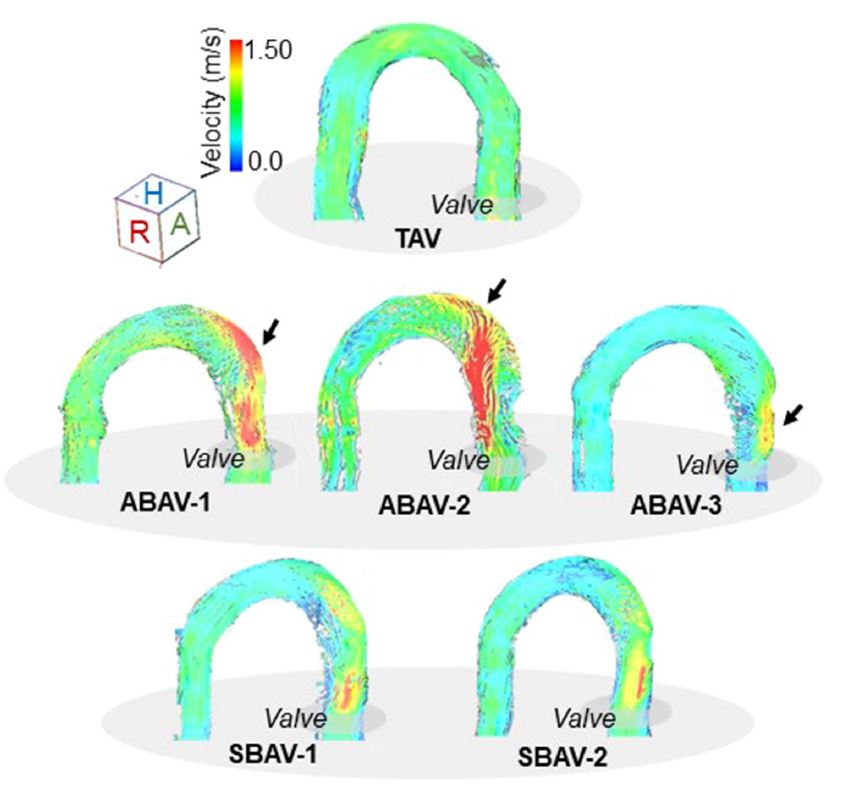Case Review
Bicuspid aortic valve morphology and aortic valvular outflow jets: an experimental analysis using an MRI‑compatible pulsatile flow circulation system
Compared to the tricuspid aortic valve, the bicuspid aortic valve is more frequently associated with ascending aortic dilation and increases the risk of developing aortic dissection. In addition, bicuspid aortic valve have been reported to affect remodeling of the aortic wall due to hemodynamic changes associated with valve morphology, but are not well understood clinically. To identify the morphology of the aortic bicuspid valve at high risk of aortic dilation, they created three aortic valve models, tricuspid valve, asymmetric bicuspid valve, and symmetric bicuspid valve and analyzed the hemodynamics using iTFlow. Then they have investigated the effect of BAV morphology on the characteristics of the aortic valvular outflow jets.
The results showed that the symmetry of the bicuspid aortic valve and the position of the small leaflets were determinants of the characteristics of the aortic valvular outflow jets.
The results showed that the symmetry of the bicuspid aortic valve and the position of the small leaflets were determinants of the characteristics of the aortic valvular outflow jets.

Reference
Kaoru Hattori, Natsuki Nakama, Jumpei Takada, Gohki Nishimura, Ryo Moriwaki, Eita Kawasaki, Michinobu Nagao, Yasuhiro Goto, Hiroshi Niinami & Kiyotaka Iwasaki, "Bicuspid aortic valve morphology and aortic valvular outflow jets: an experimental analysis using an MRI‑compatible pulsatile flow circulation system", Scientific Reports , 11 (2021) https://doi.org/10.1038/s41598-021-81845-w.
Go To the Journal Page
Download PDF 
